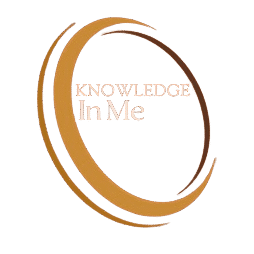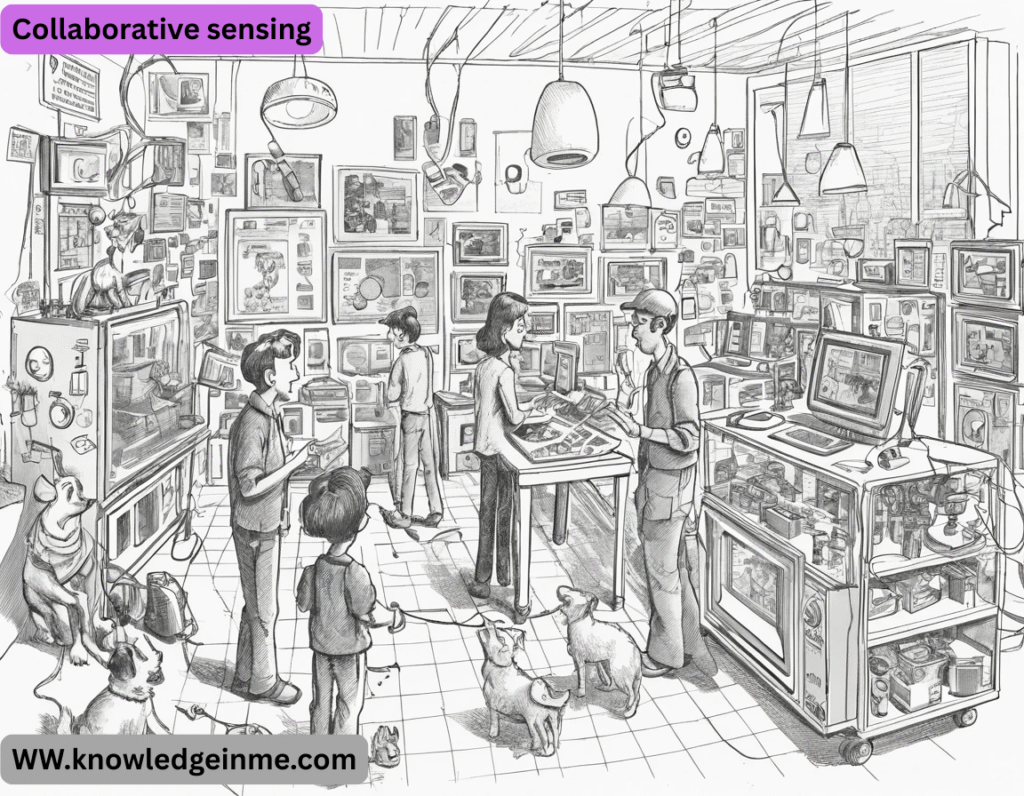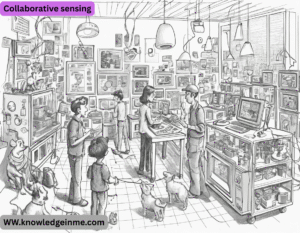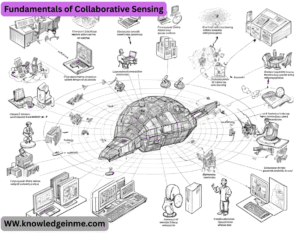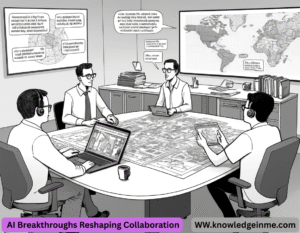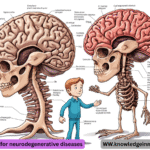Collaborative sensing 2 This approach enhances the accuracy, coverage, and robustness of sensing tasks by leveraging the collective capabilities of distributed sensors.
Key Aspects of Collaborative Sensing
Multi-Sensor Coordination
- Multiple sensors (e.g., IoT devices, drones, autonomous vehicles) collaborate to collect data from different perspectives.
- Example: A swarm of drones mapping a disaster area collaboratively for better coverage.
Data Fusion & Integration
- Combines data from various sources to improve reliability and reduce uncertainty.
- Techniques: Bayesian inference, Kalman filtering, deep learning-based fusion.
Distributed Processing
- Sensors may process data locally (edge computing) or transmit it to a central system (cloud/fog computing).
- Reduces latency and bandwidth usage.
Communication & Networking
- Reliable communication protocols (e.g., 5G, LORA, Wi-Fi) enable real-time data sharing.
- Challenges include synchronization and energy efficiency.
Adaptive & Self-Organizing Systems
- Sensors dynamically adjust their roles based on network conditions (e.g., leader-follower models in robot teams).
Applications:
- Autonomous Vehicles: Cars sharing real-time traffic and obstacle data.
- Smart Cities: Environmental monitoring using distributed IoT sensors.
- Disaster Response: Drones and robots collaboratively searching for survivors.
- Healthcare: Wearable devices sharing patient data for remote monitoring.
- Military & Surveillance: Distributed radar/sensor networks for threat detection.
Challenges:
- Privacy & Security: Ensuring data integrity and preventing unauthorized access.
- Scalability: Managing large-scale sensor networks efficiently.
- Energy Constraints: Optimizing power usage in battery-operated devices.
- Data Overload: Efficiently processing and storing vast amounts of sensor data.
Fundamentals of Collaborative Sensing
Definition & Core Concepts
- Collaborative Sensing (CS): A system where multiple sensing nodes (static or mobile) cooperate to achieve a shared sensing objective, improving coverage, accuracy, and efficiency.
Key Elements:
- Communication: Wireless networks (Wi-Fi, 5G, LORA, mesh networks).
- Data Fusion: Combining observations for better inference.
- Decision-Making: Distributed or centralized control.
Network Topologies
- Star Topology: Central hub (e.g., drone coordinating ground sensors).
- Mesh Topology: Peer-to-peer communication (e.g., swarm robotics).
- Hierarchical: Clusters of sensors with local leaders (e.g., IoT sensor networks).
Key Algorithms & Techniques
Data Fusion Methods
- Bayesian Inference: Probabilistic combination of sensor data.
- Kalman Filtering: Dynamic state estimation (e.g., tracking moving objects).
- Deep Learning-Based Fusion: Neural networks for feature-level fusion (e.g., CNN + LiDAR + radar for autonomous driving).
Distributed Optimization
- Consensus Algorithms: Sensors agree on a shared state (e.g., average consensus for temperature monitoring).
Task Allocation & Coordination
- Auction-Based Methods: Sensors bid for tasks (e.g., UAV surveillance).
- Game Theory: Nash equilibrium for resource allocation.
Swarm Intelligence: Bio-inspired algorithms (e.g., ant colony optimization).
Applications of Collaborative Sensing
Autonomous Vehicles & Intelligent Transportation
- V2X (Vehicle-to-Everything): Cars share LiDAR, camera, and radar data for collision avoidance.
- Traffic Monitoring: UAVs and road sensors optimize traffic flow.
Environmental & Industrial Monitoring
- Smart Agriculture: Drones + soil sensors optimize irrigation.
- Pollution Tracking: Distributed air quality sensors in cities.
Disaster Response & Search-and-Rescue
- Drone Swarms: Collaborate to map disaster zones and locate survivors.
- Robot Teams: Ground and aerial robots explore hazardous areas.
Healthcare & Wearables
- Remote Patient Monitoring: Multiple wearables track vitals and detect anomalies.
- Surgical Robotics: Collaborative robotic arms assist surgeons.
Defense & Surveillance
- Distributed Radar Networks: Detect stealth aircraft via multi-angle sensing.
- Battlefield IoT: Soldiers, drones, and sensors share real-time intel.
Challenges & Open Problems
Technical Challenges
- Energy Efficiency: Battery-powered sensors need low-power communication.
- Latency & Real-Time Processing: Critical for autonomous systems.
- Data Overload: Filtering relevant data from massive sensor streams.
Security & Privacy Risks
- Eavesdropping & Spoofing: Secure communication (e.g., blockchain for trust).
- Data Integrity: Preventing false data injection attacks.
Standardization & Interoperability
- Different manufacturers use varying protocols (e.g., Zigbee vs. LoRaWAN).
Future Directions
AI & Machine Learning Advancements
- Reinforcement Learning (RL): Adaptive collaboration strategies.
- Neuromorphic Sensing: Brain-inspired efficient sensing.
Next-Gen Communication Technologies
- 6G Networks: Ultra-low latency for real-time collaborative sensing.
- Terahertz (THz) Sensing: High-resolution imaging in medical/security apps.
Advanced Techniques in Collaborative Sensing
Federated Learning for Privacy-Preserving Collaboration
- Concept: Sensors train shared AI models without sharing raw data.
- Use Case: Hospitals collaboratively train a cancer detection model while keeping patient data private.
Challenges:
- Non-IID Data: Sensors may have biased/localized data distributions.
- Communication Overhead: Frequent model updates drain bandwidth.
Neuromorphic Collaborative Sensing
- Bio-Inspired Sensors: Mimic human neural processing (e.g., event-based cameras).
Applications:
- Low-Power Surveillance: Drones with neuromorphic vision detect anomalies efficiently.
- Robotics: Spike-based communication for agile robot swarms.
Digital Twins + Collaborative Sensing
- Concept: Virtual replicas of physical systems fed by real-time sensor networks.
Example:
- Smart Factory: Thousands of IoT sensors simulate production lines for predictive maintenance.
Blockchain for Decentralized Trust
- Smart Contracts: Automate sensor node agreements (e.g., payment for data sharing).
Use Case:
- Freight Tracking: Shipping containers with collaborative sensors log tamper-proof data on-chain.
Differential Privacy
- Technique: Add noise to shared data to prevent re-identification.
Example:
- Traffic Monitoring: Vehicles share location traces without revealing identities.
Real-World Case Studies
Project Maven (US DoD)
- Goal: AI-driven analysis of drone footage using collaborative sensors.
- Outcome: Reduced image analysis time from hours to seconds.
Google’s Project Sunroof
Collaborative Sensors: Combines satellite imagery + rooftop solar data to estimate solar potential.
OceanOneK (Stanford’s Robotic Diver)
- Deep-Sea Exploration: Human operator collaborates with AI and robot swarm to explore shipwrecks.
Emerging Paradigms
Quantum Collaborative Sensing
- Quantum Radar: Multiple entangled sensors detect stealth aircraft with unprecedented precision.
- Challenges: Decoherence, extreme cooling requirements.
Swarm Molecular Communication
- Biohybrid Systems: Nanobots communicate via chemical signals for medical diagnostics.
Haptic Collaboration
- 6G + Tactile Internet: Surgeons control remote robotic sensors with near-zero latency.
Open Research Problems
- Energy-Neutral Sensing: Can collaborative networks self-power via energy harvesting?
- Explainable AI for Sensor Fusion: How to audit decisions made by fused sensor data?
- Metaverse Sensing: Collaborative sensors building real-time digital twins of cities.
Radical New Architectures
The “Sensor Dust” Paradigm
- Concept: Thousands of microscopic, biodegradable sensors dispersed in air/water.
Applications:
- Climate Monitoring: Real-time atmospheric CO₂ tracking across continents.
- Precision Medicine: In-body nanoswarms detecting tumors early.
Challenges:
- Powering them (light/kinetic energy harvesting).
- Coordinating movement (chemotaxis, magnetic steering).
Biological Hybrid Sensing
- Living Sensors: Genetically engineered bacteria that detect toxins + transmit data.
- Neural-Integrated Sensors: Brain-computer interfaces (BCIs) merging human + machine sensing.
Holographic Sensor Networks
- LiDAR 2.0: Collaborative sensors reconstruct environments as 3D holograms in real time.
- Use Case: Emergency responders “see” through smoke via distributed thermal + LiDAR fusion.
AI Breakthroughs Reshaping Collaboration
Foundation Models for Sensors
- GPT for Sensors: A single AI model trained on multimodal sensor data (vision, radar, etc.).
- Example: Meta’s Image Bind extended to process satellite + drone + seismic data jointly.
- Self-Supervised Learning: Sensors learn from unlabeled data (critical for rare events).
Cognitive Sensors
- Sensors That “Think”: Tiny ML chips enabling on-sensor decision-making.
- Example: Wildlife tags that classify poacher sounds locally, without cloud.
The “Sensing Transformer”
- Concept: Attention mechanisms dynamically prioritize which sensors to “listen to.”
- Applied to: Autonomous cars ignoring faulty LiDARs in sandstorms.
